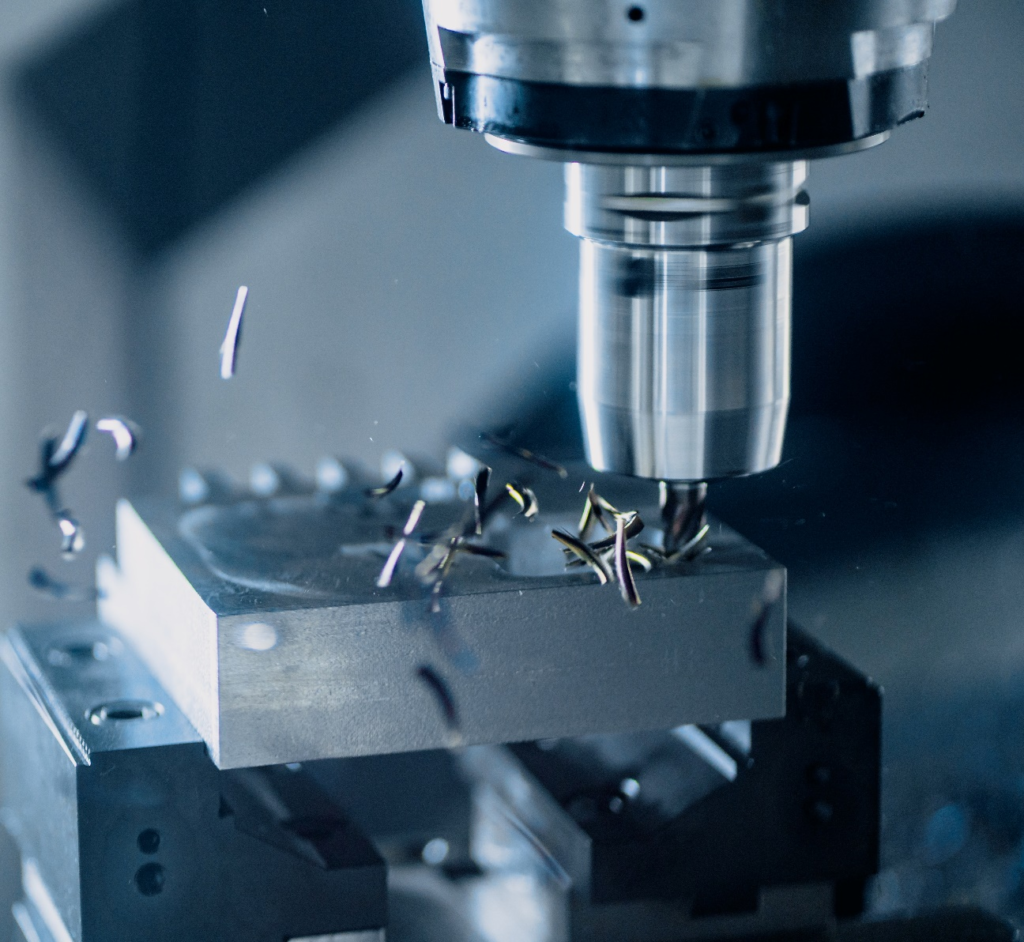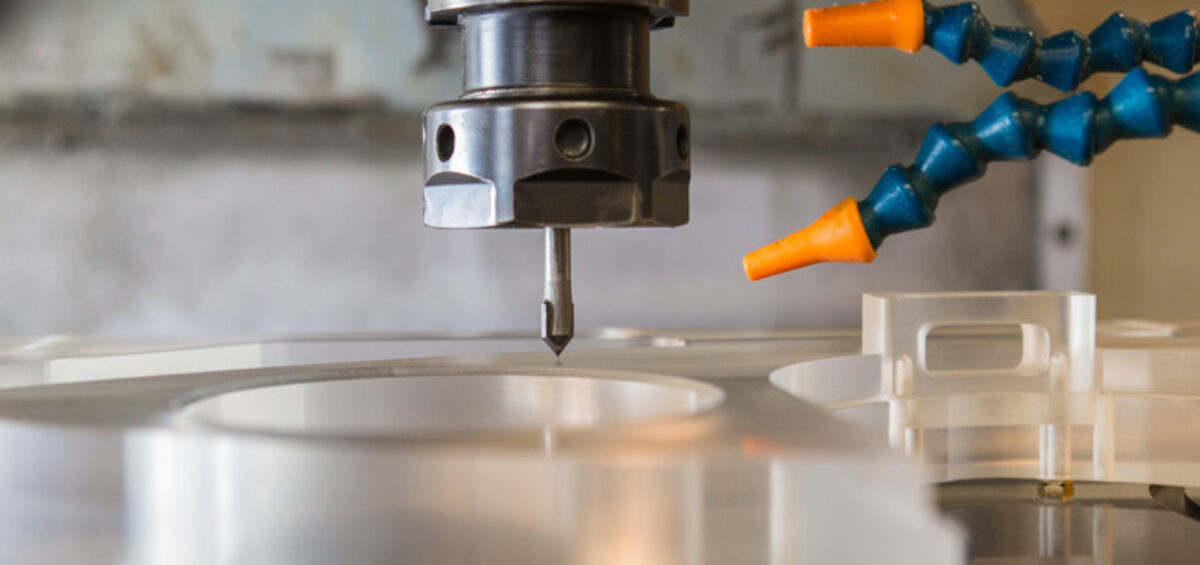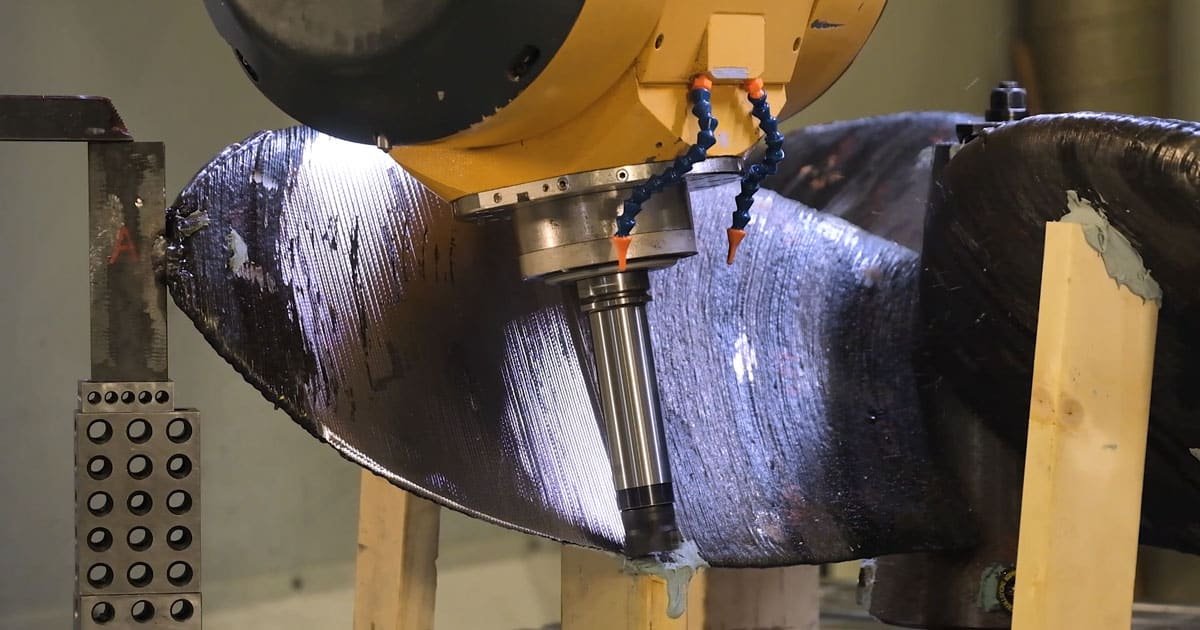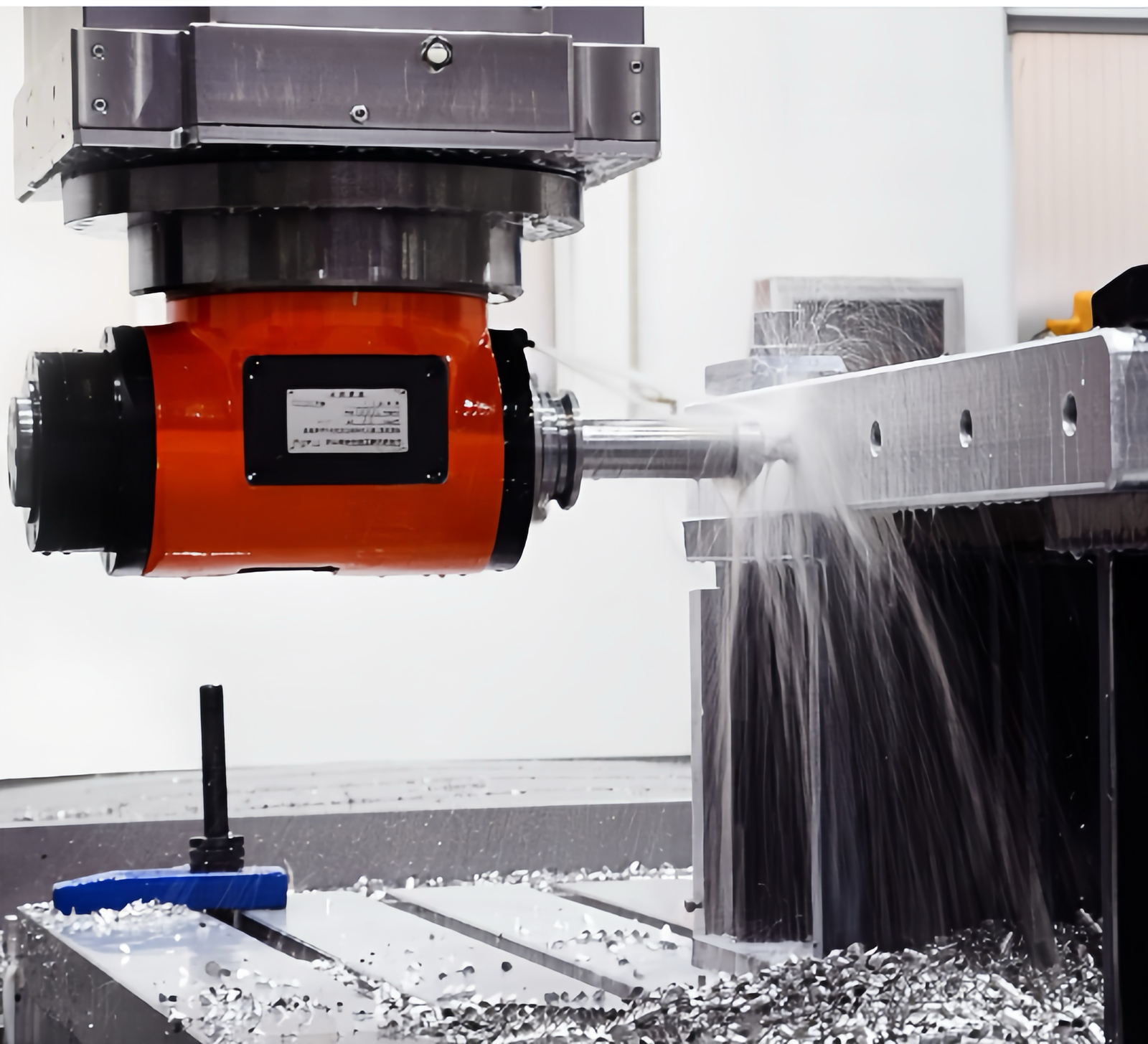Ever since the Industrial Revolution, companies have looked for new and more effective ways of boosting their production and making the absolute most of their resources.
In the late 40s, John T Parsons developed the notion of, 'Numerical Control' (NC) with machines that punched tape and this was the beginning of something that would have a lasting impact.
CNC or 'Computer Numerical Control' was the technological advancement of this process, and it's been around since 1952 when Richard Kegg (in collaboration with MIT) developed the first CNC Milling machine (the Cincinnati Milacron Hydrotel - patented in 1958 as the 'Motor Controlled Apparatus for Positioning Machine Tool') – this was the real commercial birth of the technology, and it’s come a long way since then.
As advances in computer technology, 3-D printing, and other innovations change the technological landscape, the complexity and fine detail of many cutting and processing jobs are becoming more intricate, and CNC machining has had to adapt to keep up, especially with the advent of 3-D printing (which is arguably one of its greatest competitors).
CNC is a programmable code that's designed and entered into specific machines and allows them to carry out precise movements - taking a virtual object (the design) and turning it into a real one (the product).

Because this code is transformed into 'Cartesian coordinates', the machines function almost like robots - delivering a superior level of precision and a quality that will always be as good as its original design.
When we talk about CNC ‘machining’, we’re talking about milling, turning, and drilling – but overall, the term machining covers a wide range of mechanical technology that involves physical contact to remove material, utilizing a range of tools to do so.
All CNC machining uses CNC Machines, but not all of these are for machining – and this is because of the computer numerical control, and the utilization of computerized systems that allow the method to be automated – CNC machines might include different types of cutters (such as plasma or laser), press brakes, and so on, but it also includes computers.
In this article, we're going to take a deeper look at CNC Milling and CNC Drilling, discussing what these terms mean, how the machines work, and what the difference between these two technological styles involves – and then we'll take a look at how these are being used, and what the future holds for CNC machining as it competes with other technologies and innovations.
What is CNC Milling?

When it comes to CNC Milling, the process is a subtractive one, that uses the computer numerical control system for automation, and crafts by taking materials away until the finalized and finished designs are formulated.
Milling is the term used for the process of cutting and drilling materials (often wood, plastic or metal), and generally utilizes a rotating cylindrical tool (a milling cutter) that is held in a spindle. These can range in form and size and offers the ability to move along a different axis to cut at different angles to create slots, holes, and details in the material.
Before CNC technology, milling machines came in a variety of types (ranging individually from 2-axis to 5-axis machines) with each progressive numerical value adding a different axis or function. Since CNC Milling machines are computer operated, they make use of any number of axes (from 2 to 5) and don't require manual operation.
Modern CNC Milling machines can be assembled as both horizontal and vertical machining centers – a vertical machine has the axis orientated in a vertical position, and usually has long thin cutting tools – these are generally cheaper than horizontal mills (prices can be up to 4-5x different) and are more often seen in workshops (because of the availability afforded by the lower price), and are considered easier to use (with increased user visibility of the work zone).
Horizontal machines are orientated with the axis in a horizontal position and generally have shorter and thicker cutting tools. When comparing the two, horizontal machines are considered to be less versatile, but also much better suited for long material work, as they also allow for parts to be created with fewer operations, a better surface finish, and faster milling.
Because of the huge range of designs that can be created with a CNC machine, it’s no surprise to find that there’s a range of different types of CNC Milling machines available, varying in size to better suit the jobs they’re used for – such as Turret Mills, which work vertically with a fixed spindle (the table adjusts to do the job), which are best suited for detail work, or Bed Mills which are built on larger more rigid frames and are often utilized for mid-sized production that the Turret would be too small to handle.
Choosing the right machine for the job is an important decision, as the different sizes, functions, and operating capabilities play a huge role in whether or not it’s fit for purpose.
The milling process has several different steps that see it through from start to finish – designing the required part in CAD (Computer-Aided Design), translating that file into machine code, setting up the machinery, and allowing it to create the part.
Care has to be taken, especially in the initial stage, to ensure the model that's being designed is possible to produce, and that the machine is set up properly to handle it.
What is CNC Drilling?

Unlike CNC Milling, which utilizes multiple axis and movement to form a product or part, CNC drilling is a process that utilizes a rotating cutting tool, which produces round holes, this is done in a stationary workpiece and is commonly implemented for mass production as it makes for a more efficient production line.
Similar to the CNC Milling machine, these machines use computer code to automate the drilling process as they work in tandem with CNC software which sees a design created in CAD formatted into code and inputted into the machine, where it follows the instructions to drill with increased accuracy and efficiency compared to traditional methods.
Whilst CNC Drilling machines are more commonly found in industrial settings, a wider range of cheaper machines is becoming available, and is opening up their usage to hobbyists and smaller businesses.
These machines are capable of working with different materials, such as glass, wood, plastics, and soft metals. They come in a range of sizes and styles, including upright, bench, and radial – and there are multiple elements in each machine such as the spindle (for securing the chuck and drill bit), the table (to provide the workspace for the drilling machine), a column (for supporting the CNC machine elements), drill bit (for the actual work), and interface (for controlling machines with operator input).
There are a variety of factors to consider when looking at a CNC Drilling machine, including the size of the working area available, its compatibility with the projects at hand, the durability, torque level, spindle speed, and usability.
Once a machine is set up, the usability phases go from the operator uploading the CAD or CAM (Computer-Aided Manufacturing) design to be converted to code, installing the correct drill bit, securing the raw material to the table, starting the drilling process through the interface, and letting the machine get to work drilling holes of appropriate sizes and diameters.
Uses of CNC Milling

CNC Milling machines, with their versatile cutting abilities, and superior precision, are used in many different industries, and for a range of different parts or products.
There is a wide assortment of cutting tools available for most machines, and these allow for greater flexibility, and opportunities to work with different materials, which further increases the usability of CNC Milling in different lines of work.
The four main types of milling cover:
- Plain Milling
- Also known as slab or surface milling, this is used for creating a flat surface
- Face Milling
- The rotary axis is set perpendicular to the material's surface and combined with tooth cut tools, to cut raw materials, with those in contact with the flat material being used for finishing.
- Angular Milling
- As you might expect from the name, this involves the tool's axis being set at an angle from the raw material's surface, and this provides a midpoint between Plain and Face milling.
- Form Milling
- This is the milling used for creating parts that have no flat surfaces, and the machines involved are often fitted with multiple different tools during the task, to obtain the curves or shapes desired.
Because of the versatility, the CNC Milling process brings (you're pretty much only limited by the workability of the design), the techniques are used for a huge number of projects. They are perhaps most commonly associated with the automobile and aerospace industries (creating car and plane parts respectively), but due to their compatibility with a variety of materials (such as steel, aluminum, copper, titanium, bronze, wood, nylon, extruded polyurethane, stone, and plastic), the process is also used for projects such as:
- Sculpture
- Prototype and Modelling
- Woodworking
- Instruments
- Aluminum Machining
- Plastic Machining
- Furniture
- Signage
- Cabinet and Shelving
Depending on the project, the usage (whether it's from a hobbyist or an industrial complex), and the scale of the project, there is a huge range of uses that CNC Milling machines can bring with them.
Uses of CNC Drilling

For projects that require a higher degree of accuracy, broader versatility, and greater reproducibility, CNC Drilling machines are a smart option – because they work to design, there is no human error involved with the process, the machines will create parts that replicate the CAD / CAM design, which allows for high consistency to be achieved through and between batches – this has led to CNC Drilling being a popular option for creating parts such as hubs, machine shafts, gear blanks, aluminum or plastic profiles, and more.
Drilling Machines with CNC are mainly used for reaming, chamfering, and drilling – and are largely used by automobile, aeronautics, astronautics, shipbuilding, and engineering industries for complex parts.
Common applications of these machines include:
- Metal Fabrication
- Precision holes are drilled into solid metal materials to create precision parts. These techniques are often found in automobile, aerospace, and construction industry projects to produce end parts.
- Wood Fabrication
- The CNC machine is part of standard operations for wood manufacturers (such as furniture makers, cabinet makers, etc). The Drilling Machine is often used in conjunction with other CNC machines to provide standardized levels of turning, milling, and grinding.
- Components and Parts manufacture.
- It’s common for manufacturers to use a CNC machine for drilling, especially in industries where precision and repeatability aren’t just a nice thing to have, but critical to the success of the products (such as computing)
- Plastics Manufacturing
- Because of their versatility, and ability to work with different styles and tools to create standardized products, manufacturers of different plastics also utilize CNC Drilling to fabricate electronic parts.
- Electrical Applications
- CNC Drilling (and other CNC machines) are essential for businesses in the Electrical Industry. With a Drilling Machine manufacturers have been known to use them as electrical discharge machines in several instances.
The type and size of the machine, the tool or bit used, and the complexity of the job all play a role in what drilling machine works best for the job at hand, but with interchangeable parts, and the ability to create fine precision pieces with reliable repetition, the CNC Drilling machine is certainly a valuable tool in many businesses’ workshops.
The Difference Between CNC Milling and CNC Drilling

CNC Milling and Drilling are both subtractive technologies, which require a larger portion of materials to reduce it down to the finished product, the technologies aren't mutually exclusive, and their use largely depends on what needs to be done.
Although the machines look similar and operate similarly, their functions are vastly different.
The main difference between CNC Milling and CNC Drilling is the functionality, motion, and desired result – for projects that require holes only, then drilling is the most appropriate option to choose, but if the design is more complex, and requires different shapes or surfaces, then a CNC Milling machine is the best choice.
CNC Drills are used to press through the material and create precision holes from a flat surface, whereas milling cuts in from varying axis' and can create a variety of cut-out shapes within the material due to their movability along these axes.
Milling machines can allow you to use drill bits to cut up and down but drilling machines don’t allow you to cut horizontally with milling bits.
Most CNC Milling machines will have built-in tables to secure the materials and project in place, but this isn't always the case with CNC Drilling machines – they might come with a vice, which can make them more flexible in setting up in an area where space restrictions are an issue.
Drilling Machines also have an advantage in often being considerably less bulky than Milling machines, although neither is particularly suited for mobile operations.
There are pros and cons to both technologies, and when deciding on whether a CNC Drilling or Milling machine is most appropriate, it’s going to largely depend on the type of work it’s being procured to handle, the amount of available space to set it up, the speed and quality of the computing interface and available connections (such as internet speed), and the budgetary restrictions of the company.
It's also important to note that many CNC devices can work in conjunction with each other (beyond just the Mill and Drill) and having space and budget to extend into other areas and machines, can vastly increase the productive and creative options available.
CNC Milling and CNC Drilling in Conclusion

Technological advances continue to alter the landscape of the industry, and subtractive techniques may no longer be as desirable as they once were, especially with options such as 3-D Printing available, which builds up a pattern, rather than knocks materials away to create it.
But that is not to say the future of CNC Milling or Drilling is limited – the technology is still evolving and changing, as computer programming becomes more flexible, previously unobtainable designs become craftable, and different materials are introduced into common usage.
CNC still offers significant improvements in the speed at which it can produce metal products, and for larger parts, the machines are still operating beyond the capabilities of their nearest technological competitors.
The future of CNC is looking towards further integration and synchronization between several machines, to increase the efficiency and capability of the entire parts creating process, which will naturally see production times dropping, without a corresponding impact on quality.
As the tools become more specialized and customized, there will be an increase in productivity, accuracy, and less need for down or cooling off time as this technology continues to further the advancement of more creative and specialized products.
When it comes to manufacturing processes though, the old saying is still massively appropriate, “You have to choose the right tool for the right job.”








